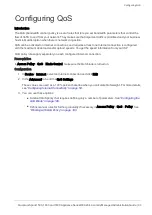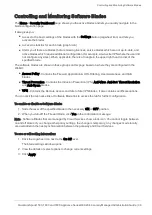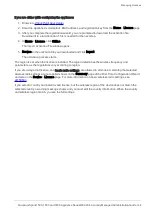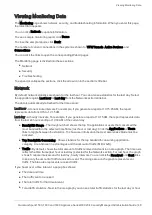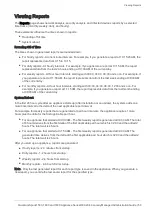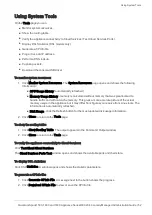
Setting the Management Mode
Quantum Spark 1500, 1600 and 1800 Appliance Series R80.20.40 Locally Managed Administration Guide | 38
Setting the Management Mode
The
Home
>
Security Management
page shows information for the management mode of the appliance.
You can also test Internet Connectivity from this page.
To set the management type:
Select one of the options:
n
Locally
- To manage the appliance using the local web application (WebUI). Click
Apply
and then
Yes
when asked to confirm.
n
Centrally
- To manage the appliance using the Security Management Server.
When centrally managed, it shows the trust status between the appliance and the Security Management
Server. When a policy is prepared in SmartConsole you can fetch the policy from this window.
Security Management Server
In this section you can view the status of the management connection, last policy installation, adjust trust
settings, and initialize a connection.
1. In the Security Management Server section, click
Settings
to adjust trust settings or
Setup
to initialize
a connection.
The
Welcome to the Security Management Server Configuration Wizard
opens.
Click
Next
.
2. In the
One Time Password (SIC)
page, select an option for authenticating trusted communication:
n
Initiate trusted communication securely by using a one-time password
- The one-time
password is used to authenticate communication between the appliance and the Security
Management Server in a secure manner.
Enter a one-time password and confirm it. This password is only used to establish the initial
trust. When established, trust is based on security certificates.
Important - This password must be identical to the Secure Communication authentication one-
time password configured for the appliance object in the SmartConsole of the Security
Management Server.
n
Initiate trusted communication without authentication (not secure)
- Select this option only if
you are sure that there is no risk of imposture (for example, when in a lab setting).
Click
Next
.
3. In the
Security Management Server Connection
page, select a connection method:










